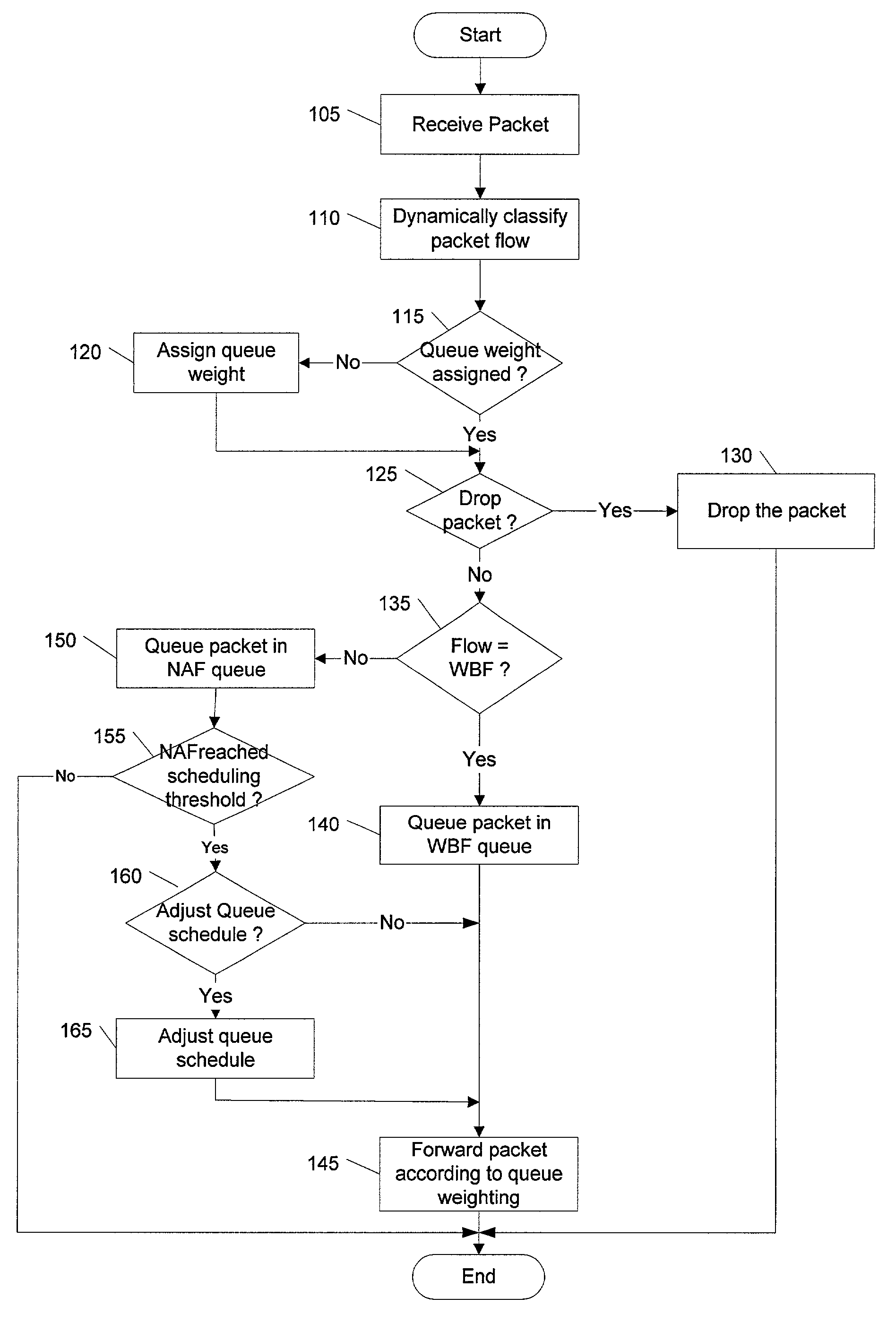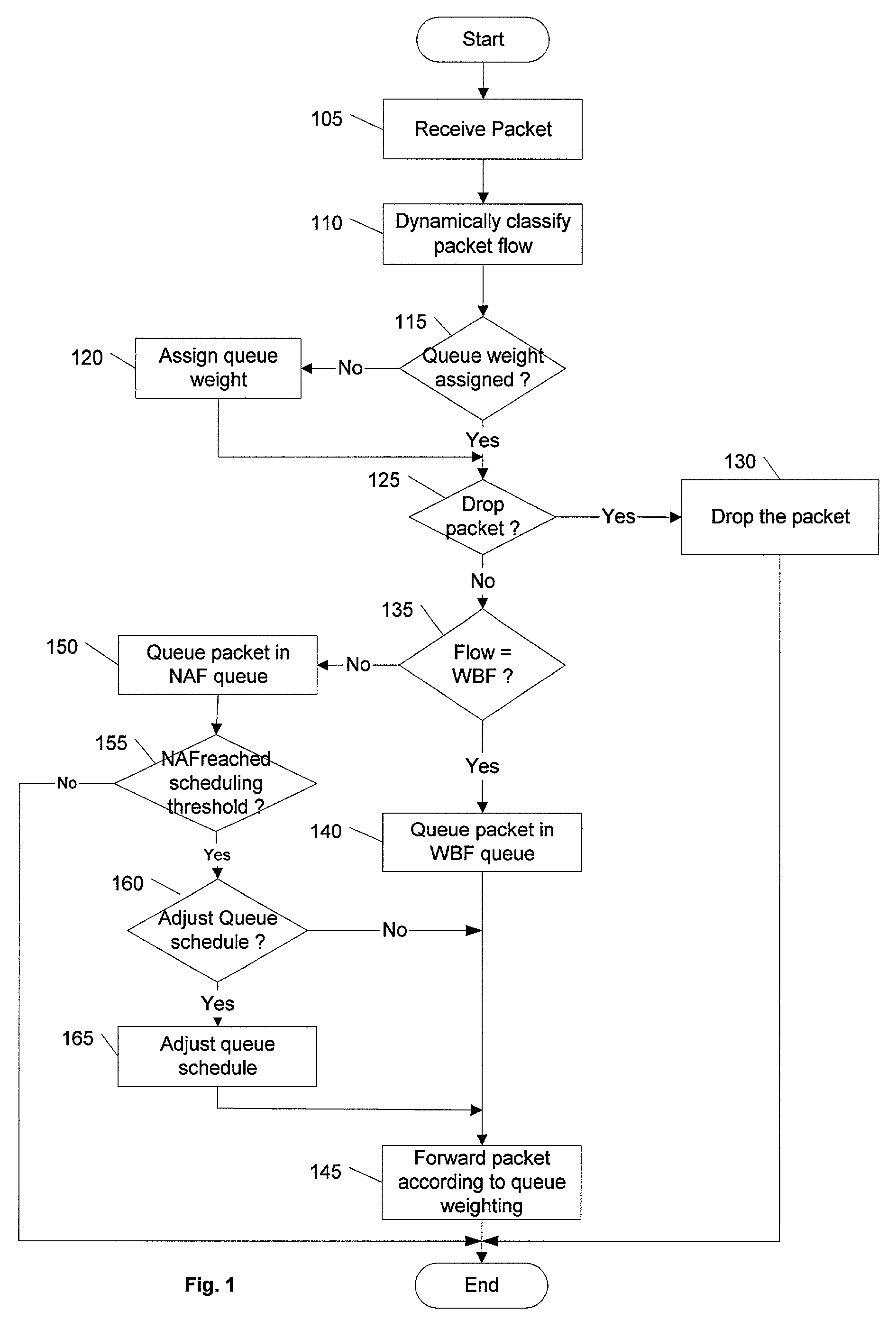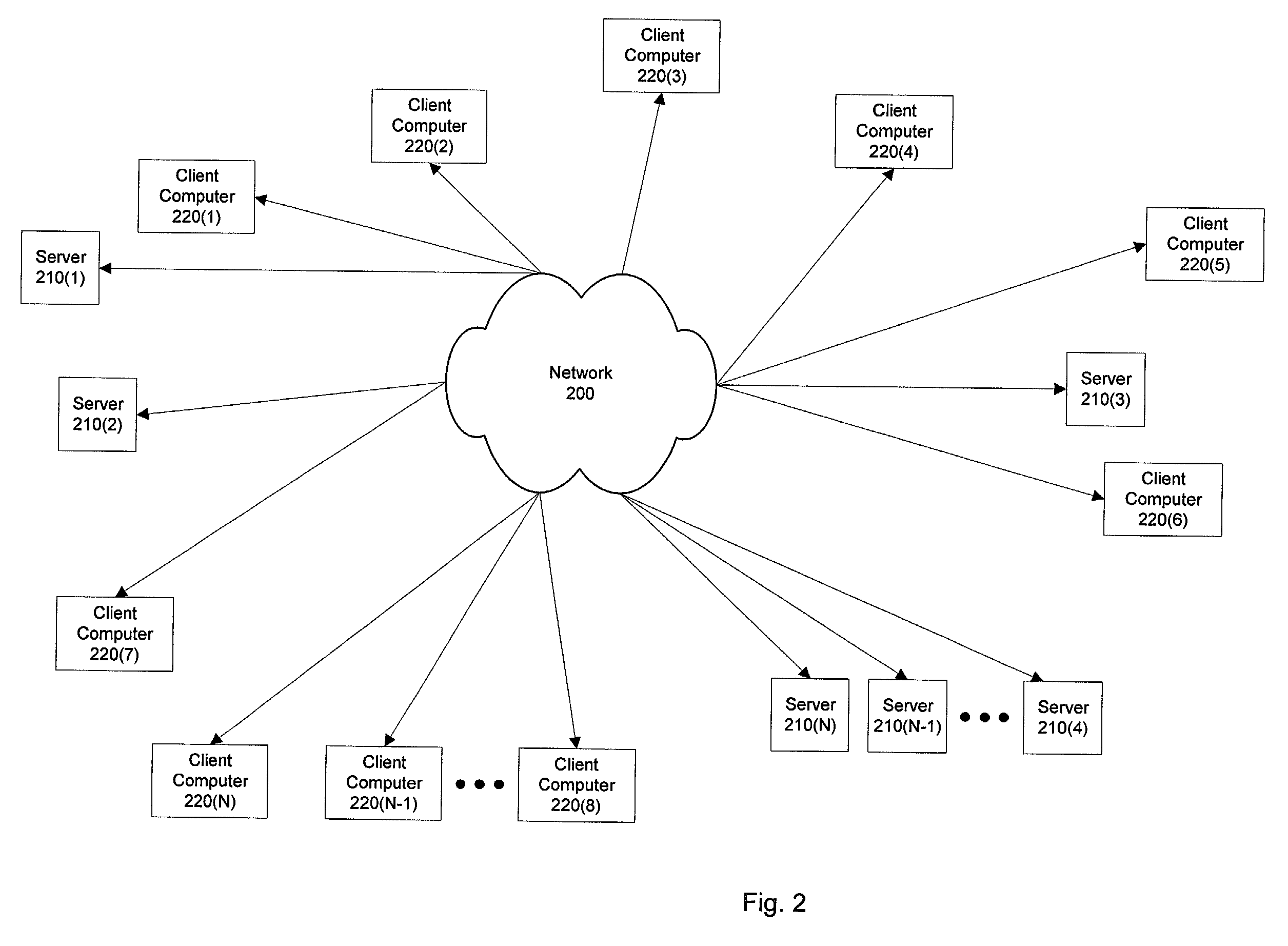Dynamic behavioral queue classification and weighting
a dynamic behavioral and queue technology, applied in data switching networks, frequency-division multiplexes, instruments, etc., can solve the problems of packet delay and drop by wbfs, other flows do not dynamically adapt to available bandwidth, and it is difficult to reduce buffer consumption to zero withou
- Summary
- Abstract
- Description
- Claims
- Application Information
AI Technical Summary
Problems solved by technology
Method used
Image
Examples
Embodiment Construction
[0019]The following is intended to provide a detailed description of an example of the invention and should not be taken to be limiting of the invention itself. Rather, any number of variations may fall within the scope of the invention which is defined in the claims following the description.
Introduction
[0020]The present invention defines a method and apparatus to extend class-based queuing (CBQ) with multiple “behavioral” queues per class, to include a dynamic weighting mechanism between these queues. The packets are mapped to one of these behavioral queues within a class. WBF packets are queued to specific WBF queue for that class and NAF packets are queued to specific NAF queue for that class. Each behavioral queue is assigned a ‘weight’. The packets are forwarded from the behavioral queues according to the weighting assigned to each queue. According to an embodiment of the present invention, the weighting for packet scheduling of the NAF queue is adjusted to account for additio...
PUM
 Login to View More
Login to View More Abstract
Description
Claims
Application Information
 Login to View More
Login to View More - Generate Ideas
- Intellectual Property
- Life Sciences
- Materials
- Tech Scout
- Unparalleled Data Quality
- Higher Quality Content
- 60% Fewer Hallucinations
Browse by: Latest US Patents, China's latest patents, Technical Efficacy Thesaurus, Application Domain, Technology Topic, Popular Technical Reports.
© 2025 PatSnap. All rights reserved.Legal|Privacy policy|Modern Slavery Act Transparency Statement|Sitemap|About US| Contact US: help@patsnap.com



